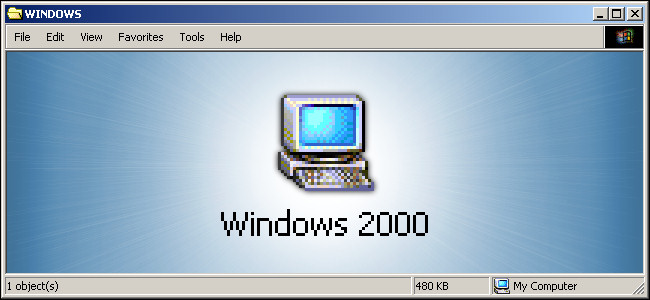
Remembering Windows 2000, Microsoft’s Forgotten Masterpiece
Twenty years ago, Microsoft released Windows 2000. A rock-solid, 32-bit business-oriented alternative to Windows 98 and Windows Millennium Edition, it paved the way for future consumer versions, including Windows 10. Here’s why we remember it so fondly.
It Was Based on Windows NT, Not MS-DOS
Released worldwide on February 17, 2000, Windows 2000 started as Windows NT 5.0, the latest in the Windows NT line of professional Microsoft operating systems. Microsoft created Windows NT from scratch in the early 1990s as part of a fundamental shift away from MS-DOS-based versions like Windows 3.x.
Throughout the ’90s, Microsoft maintained DOS-based Windows along with NT to serve those who were still dependent on legacy MS-DOS and 16-bit Windows software. Microsoft was eager to transition to NT for all, but the system requirements for a reasonably useful Windows NT machine far exceeded what most consumers had at home.
By the late ’90s, many consumer PCs were finally powerful enough to run Windows NT, so they became ripe targets for potential Windows 2000 installations. Some at Microsoft hoped Windows 2000 would be the transition point for consumer Windows to become NT. However, Microsoft decided to hold off until Windows XP in 2001.
This made many who used Windows 2000 feel that much cooler for getting a taste of a stable Windows operating system ahead of time.
It Was Rock-Solid Stable, Unlike Windows Me
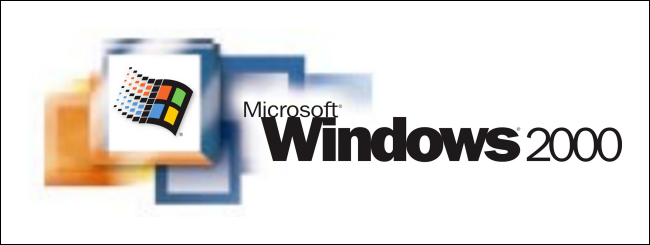
If you used a PC in the late ’90s, you were quite familiar with the frequent crashes, lockups, and reboots that were common on MS-DOS, Windows 3.x, and Windows 9x. The DOS-based PC ecosystem was a house of cards built on an ancient patchwork of code that ran on endless variations of hardware.
As DOS-based Windows became more complex and feature-laden, more people began to rely on their PCs for serious work, and the instability issues came to a head. Windows 98 frequently required reboots and reinstallation to fix puzzling, recurrent issues with applications that conflicted with each other and the OS. Critics widely panned Windows Me (released in September 2000), the last in the line of MS-DOS-based Windows, for being bloated and unstable.
Enter Windows 2000, which ran with rock-solid stability on the very same hardware most people used with Windows 98. At the time, being able to leave a computer running without it crashing, and not having to reboot after installing software seemed like a miracle. In fact, Microsoft included “Dramatically Reduced Reboot Scenarios” as one of the primary selling features of Windows 2000 on its website back in 2000.
Some people were delighted to hear about the stability possible with an NT-based operating system. In December 2000, someone called DAEtrader posted the following about Windows 2000:
“I assumed the weird lockups, or freezes, or erratic error messages were to be expected from any platform. But I’m encouraged to hear there is a more stable platform than Win98.”
It Was Full of Useful New Features
Windows 2000 shipped in four different editions: Professional, Server, Advanced Server, and Datacenter Server. Windows 2000 Professional was aimed squarely at enterprise desktop customers and was the version used the most. All of them included advanced new features that made Windows 2000 an attractive upgrade for both Windows NT 4.0 and Windows 98.
The new OS also introduced interface changes designed to align Windows NT with Windows 98. It also supported technologies like Active Desktop, USB, NTFS 3.0, and FAT32. The inclusion of DirectX support made Windows 2000 compatible with many modern computer games. It also brought NT one step closer to becoming a universal consumer/business crossover operating system.
Quite a few vital OS features that are considered core components of Windows today first appeared on Windows 2000. These included Microsoft Installer, which provided a more uniform program install/uninstall experience and Windows File Protection for system files. The Microsoft Management Console made it easy to manage vital system functions from a unified interface, while the Recovery Console helped after catastrophic software failures. And Active Directory offered a new way to manage Windows network domains.
While the press criticized some of Windows 2000’s driver support at launch, the OS actually supported far more hardware configurations than Windows NT 4.0. These included peripherals, and sound and graphics cards, making it the first widely-compatible version of NT, and not just for businesses, but for everyone.
It Was Free If You Pirated It
Although intended as a business desktop operating system, Windows 2000 Professional also found its way to many home PCs. This was due to both its reputation for stability and, of course, rampant piracy thanks to CD-R drives and the relative leniency of the serial-number-based copy protection Microsoft used at the time.
It was also expensive: Windows 2000 Professional retailed for $319 (about $481 today, when adjusted for inflation). Many considered it too pricey, as Windows 98 retailed for $109 (about $164 today).
Since it didn’t ship on consumer-level PCs, if you wanted it on a home machine, you either had to buy it or get a copy from someone who had a copy sitting around at work.
After years of Windows 98 and Windows Me crashes, Windows 2000 was a revelation on consumer machines.
It Was Also a Viable Windows XP Alternative
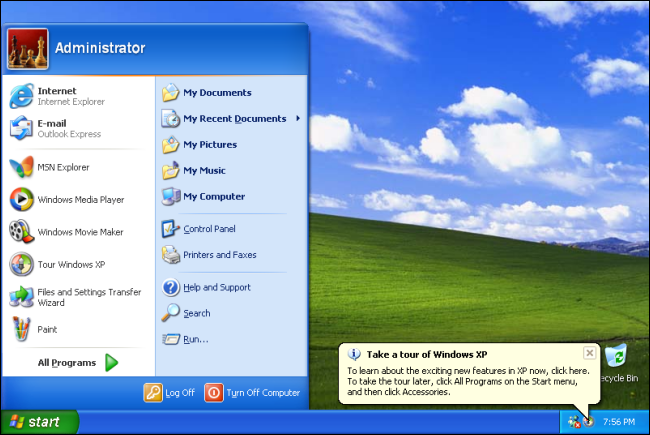
Windows 2000 also served as an alternative to its successor, Windows XP, for several years. XP included some features that were controversial at the time. These included an Internet-based product activation system that complained if you changed your PC hardware, and a colorful new shell interface some derided as “Fisher-Price.”
The more professional, gray appearance of Windows 2000 was preferable to some, and it could also run most XP programs just fine.
Related : How to setup IPTV on Android devices using STB Emulator?
It Paved the Way for the Future of Windows
Within Microsoft, Windows 2000 represented a crucial step for bringing the much more stable, technologically mature Windows NT platform to the masses. It proved that a technically advanced Windows OS could also have a consumer-friendly interface and multimedia-friendly features.
Steven Sinofsky, former president of the Windows Division at Microsoft (who managed Office at the time), told us just how critical Windows 2000 was:
“Had we not done Windows 2000, then we would never have done Windows XP. It finally brought the NT OS to a consumer operating system with compatibility.”
Windows 2000 was an essential link in an unbroken chain that started with Windows NT 1.0 in 1993 and continues to this day with Windows 10.
And Finally, the System Requirements
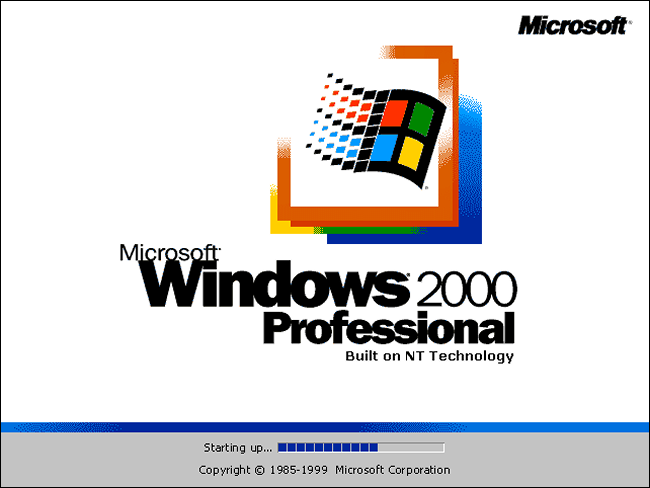
For a true blast from the past, let’s take a look at Windows 2000 Professional’s bare minimum system requirements at the time:
- 133 MHz or higher Pentium-compatible CPU.
- 64 megabytes (MB) of RAM recommended minimum; more memory generally improves responsiveness.
- 2 GB hard disk with a minimum of 650 MB of free space.
- Windows 2000 Professional supports single and dual CPU systems.
In practice, Windows 2000 needed a beefier machine to provide a reasonable experience, but not by much.
Happy Birthday, Windows 2000! We’ve certainly come a long way in both hardware capability and breadth of features, but we couldn’t have done it without you!

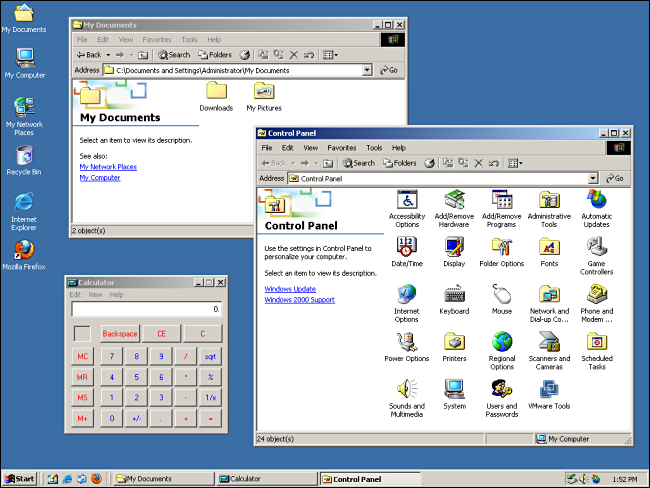
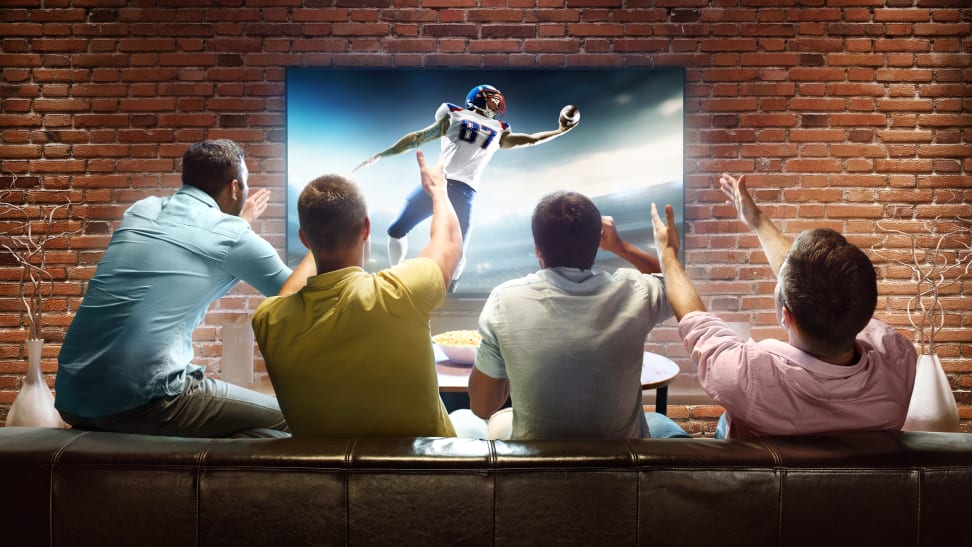





Leave a reply